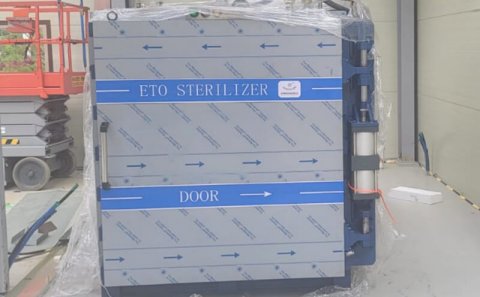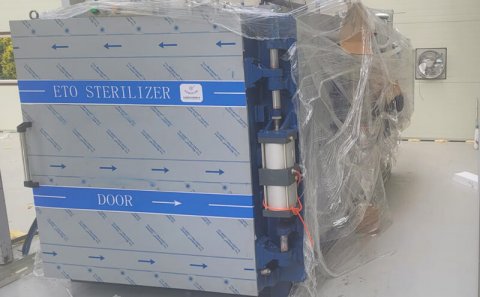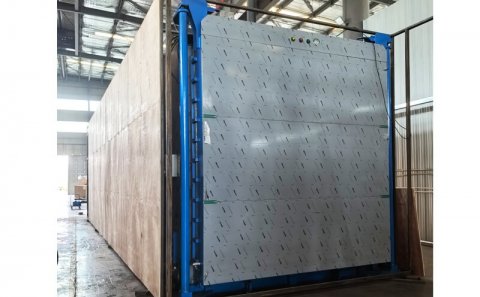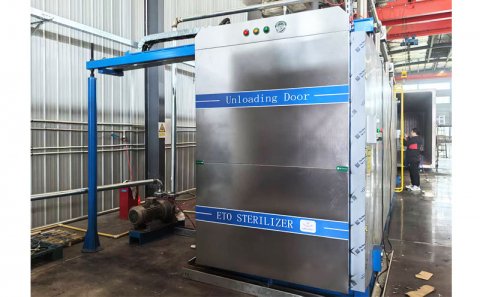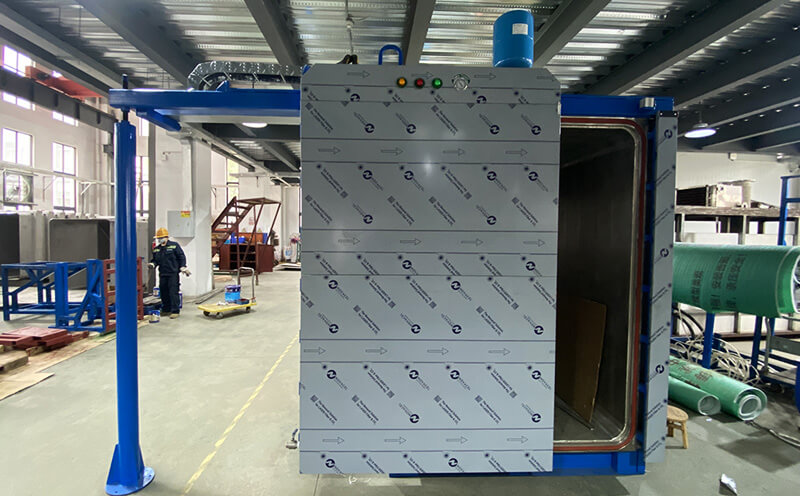
Requirement of small and medium-sized ethylene oxide sterilizers
The requirements for medium-sized and small-sized ethylene oxide sterilizers are: good pressure resistance and airtight performance, capable of withstanding 1.25 times of working pressure hydrostatic test, no denaturation and leakage, and can be vacuumized to more than 53.3? KPa; accurate dosage, good heat preservation performance, and can adjust the temperature and relative humidity in the sterilizer; after disinfection, when washing with the external environment air, the input air is Through high-efficiency filter, 99.6% of particles ≥ 0.3 μ M can be filtered out; after harmless treatment, the residual ethylene oxide in sterilized articles shall be lower than 15.2mg/m; the concentration of ethylene oxide in sterilized environment shall be lower than 2mg / m.
Sterilization treatment
It shall be carried out in accordance with the operation instructions of the ethylene oxide sterilizer manufacturer; according to the different types, packages, loading capacity and methods of sterilized articles, appropriate sterilization parameters shall be selected.
-
① The relationship between concentration, temperature and sterilization time: in a certain range, the increase of temperature and concentration can shorten the sterilization time. The parameters of temperature, concentration and time must be selected reasonably when using ethylene oxide for sterilization.
-
② To control the relative humidity of sterilization environment and the water content of articles: the water content of bacteria and the water content of sterilization articles have a significant impact on the sterilization effect of ethylene oxide. In general, 60% - 80% RH is the best. Too little water content affects the penetration of ethylene oxide and alkylation of ethylene oxide, reducing its sterilization ability; too much water content, ethylene oxide is diluted and hydrolyzed, also affecting the sterilization effect. In order to achieve the ideal humidity level, the first step is to pre wet the sterilizer, which is generally required to be placed in the environment of 50% relative humidity for at least 2 hours; the second step can use humidification device to ensure the ideal humidity level in the cabinet room.
-
③ Attention should be paid to the influence of bacteria external protectors on the sterilization effect: the more organic substances contained on the surface of bacteria, the more difficult it is to kill; organic substances can not only affect the penetration of ethylene oxide, but also consume part of ethylene oxide. It is difficult to kill microorganisms in inorganic salt or organic crystal with ethylene oxide. Therefore, before the sterilization of ethylene oxide, the organic and inorganic pollutants on the articles must be fully cleaned to ensure the success of sterilization.
packaging of articles
The articles to be sterilized must be thoroughly cleaned, and it should not be washed with normal saline. There should be no water drop or too much water on the sterilized articles to avoid dilution and hydrolysis of ethylene oxide. Ethylene oxide can be used for sterilization of almost all medical products, but it is not suitable for sterilization of food, liquid, oil, talcum powder and animal feed. The packaging materials suitable for ethylene oxide sterilization include paper, composite dialysis paper, cloth, non-woven fabric, ventilating rigid container, polyethylene, etc.; the packaging materials not suitable for ethylene oxide sterilization include metal foil, PVC, cellophane, nylon, polyester, polyvinylidene chloride, and impermeable polypropylene. The change of packaging materials shall be verified to ensure the reliability of sterilization of sterilized articles.
Summary
At present, ethylene oxide is widely used to sterilize medical devices. ethylene oxide is a flammable and explosive toxic gas, with the molecular formula of C2H4O, which has an aromatic ether smell. At 4 ° C, the relative density is 0.884, the boiling point is 10.8 ° C, and the density is 1.52g/cm3. At room temperature, it is easy to volatilize into a gas, which can cause explosion when the concentration is too high.
Jun 17, 2025
view: 1595
6 cubic meters medical EO sterilizer Advanced Modele Standard Components cabinet volume 6m cabinet size inside:Length x Width x Height =2600*1350*1700 overall size outer:Length x Width x Height =3200*2100*2300 Chamber pressure range design pressu...
Read More
Jun 17, 2025
view: 1717
Disinfectants should be used in strict accordance with the instructions in daily life. Some disinfectants can stimulate and damage skin and mucous membrane and corrode articles in high concentration. In the process of disinfection, appropriate protect...
Read More






